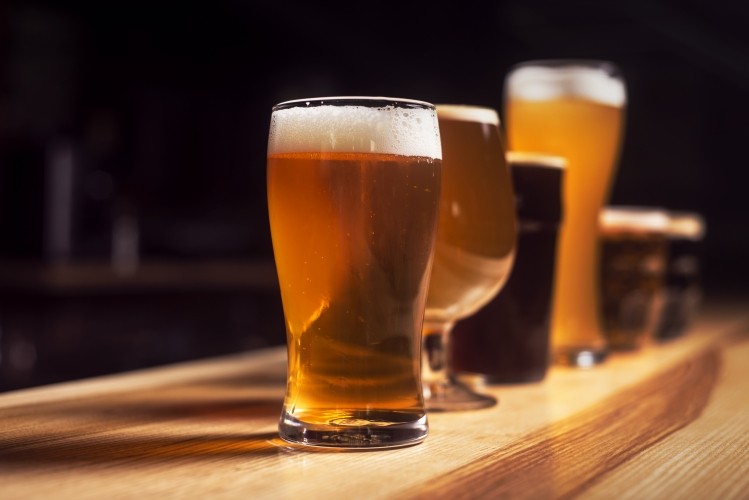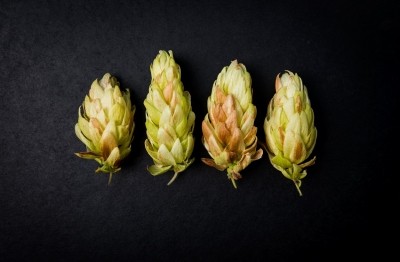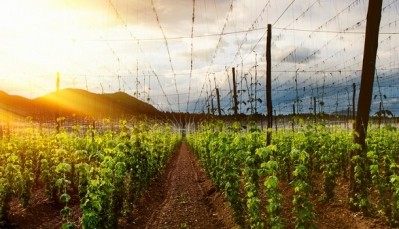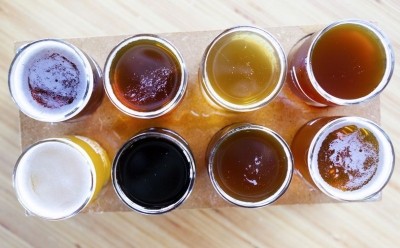Harnessing yeast’s natural biodiversity to help fuel innovation in craft brewing

Up until the industrialization of beer in the late nineteenth century, brewing all over the world was carried out locally and regionally, rather than nationally or globally as it is today. Brewing was undertaken mostly by pubs and small breweries that did not have industrialized ingredients to rely on, especially yeast, and as a result brewed using the local native flora that was kept alive by repitching a portion of the beer back into each new batch.
This process of relying on indigenous yeasts to ferment their beers enabled these breweries to produce unique and flavourful offerings. However, the process was also plagued by inconsistency and a lack of scalability.
A major limitation with repitching, both historically and now, is the ability to maintain the yeast in a consistent state batch over batch. Due to natural evolutionary pressures within the high-stress fermentation environment, yeast mutations occur continually, causing the flavour profile to change and deteriorate.
Since yeast accounts for a major part of a beer’s distinctive flavour, maintaining sensory consistency becomes a problem when the yeast is in constant flux.
Consequently, the full “catalogue” of yeast’s extensive biodiversity, although rich in promise, is too unrefined and unpredictable to be of real value in the modern brewery. Instead, to facilitate the industrialization of brewer’s yeast, the application of selective methods has shaped this biodiversity into a relatively constrained set of industrial traits focused on ease of use and reproducibility.
"The brewing industry has gone too far and focused yeasts on a very small group of industrially useful traits. What is needed is a return to the diversity and variety of the past."
Modern brewer’s yeast is defined predominantly by consistent performance and usage characteristics, much like the agricultural selection of plant varieties with long shelf life and even ripening.
Indeed, reliably performing workhorse strains have already been developed, and are in fact responsible for the majority of beer produced today. The problem is that these are all mainly competitors featuring similar trait profiles, thereby demonstrating the lack of “modern” biodiversity in today’s yeast.
In essence, the brewing industry has gone too far and focused most beer yeasts on a very small group of industrially useful traits. What is needed is a measured and thoughtful return to the diversity and variety of the past.
Hops breeding: a model for yeast
Brewers need to look no further than the impressive expansion of hops varieties that has occurred over the last few decades as a result of selective breeding to get a glimpse into the potential for yeast to expand well beyond today’s limited range of strains.
"Since yeast is responsible for more than half of a beer’s flavour, it has even more potential than hops to create new beer styles and flavours."
In North America, for example, there are now scores of hops varietals, including Cascade hops, Columbus hops, Centennial hops, Willamette, Amarillo and many others, from a number of growing regions. Over the last few decades, the US has taken the lead in breeding such new varieties, including dwarf strains, and this selective breeding has provided brewers with a range of innovative bittering, aroma and flavour options.
Since yeast is responsible for more than half of a beer’s flavour, it has even more potential than hops to enable impressive new innovations in beer styles and flavours.
While there are a lot of yeast choices in the marketplace, the problem is that the diversity of available traits within these offerings is relatively limited.
Expanding the trait diversity of brewer’s yeast would be a significant enhancement in helping brewmasters innovate for the ultra-competitive craft marketplace.
Exciting brewer’s yeast innovations are possible
For example, one possibility might be to develop a brewer’s yeast with increased production of hop-accentuating enzymes that can liberate hop aroma compounds and significantly change the aroma and flavour profiles of the different hop varieties used in beer.
Another example might involve adding a trait to increase fermentation temperature ranges; this would enable brewers to produce the desired flavour profiles at lower temperatures, thereby eliminating the problem of off odours that occur at higher temperatures.
There are also traits that will produce unique flavour profiles unlike anything currently produced using commercially available strains. These are just a few of the exciting yeast innovations available to the craft brewing industry.
What is needed is an expansion of brewer’s yeast’s biodiversity similar to that being seen in the re-emergence of heirloom varieties of various vegetables and foodstuffs such as rice, seeds and vegetables, e.g., tomatoes and grains.
"The comparative lack of attention to yeast biodiversity remains a key factor hampering true creativity in beer-making."
Over the last few decades, chefs and other food leaders have influenced or demanded a revival of vintage varieties selected for their unique flavours, sensory appeal and aromas, rather than the shelf life, high yield and slow ripening required by the mass food industry.
This philosophy seems to be headed into the beer world. In craft brewing, for example, a relic grain in Michigan that fell out of favour fifty years ago — called Spartan barley — has been resurrected in commercial quantities. New Holland Brewing in Michigan has recently released a limited-edition lager based on this vintage barley.
Nonetheless, while the hops varietal revolution and interesting new grains like this barley have helped increase craft brewers’ options, the comparative lack of attention to yeast biodiversity remains a key factor hampering true creativity in beer-making.
But yeast needn’t be that limiting factor: the “building blocks” and knowledge are in place to create uniquely expressive yeasts that are also good industrial performers. What is required is the philosophy, creativity and ingenuity to harness the biodiversity of yeast and couple it with reliable, consistent “workhorse” performance. In fact, the recent advances in classical breeding technologies represent the beginnings of exciting new developments in the brewing industry.
And this is just in time. Yeast, the humblest and most fundamental of beer ingredients, is back in the spotlight, ready to play a starring role as the new world of beer moves to recapture its diverse past. As the provider of an amazing diversity of flavours, aromas and styles, yeast’s resurgence should be music to the ears of the increasingly discriminating modern beer drinker, not to mention the craft breweries out there working to slake the insatiable consumer appetite for new and intriguing tastes.
About the authors:
Zachari Turgeon, MSc., is Lead Research Scientist - Yeast Innovation and Matthew Dahabieh, Ph.D., is Head of Research and VP Business Development, both at Renaissance BioScience Corp. The authors can be reached at zturgeon@renaissancebioscience.com and mdahabieh@renaissancebioscience.com.
Renaissance BioScience Corp. of Vancouver, Canada is a leading global yeast innovation company that develops novel, differentiated and patented non-GMO yeast technologies for the food, beverage, nutraceutical, animal feed, biofuel, and pharmaceutical industries.











